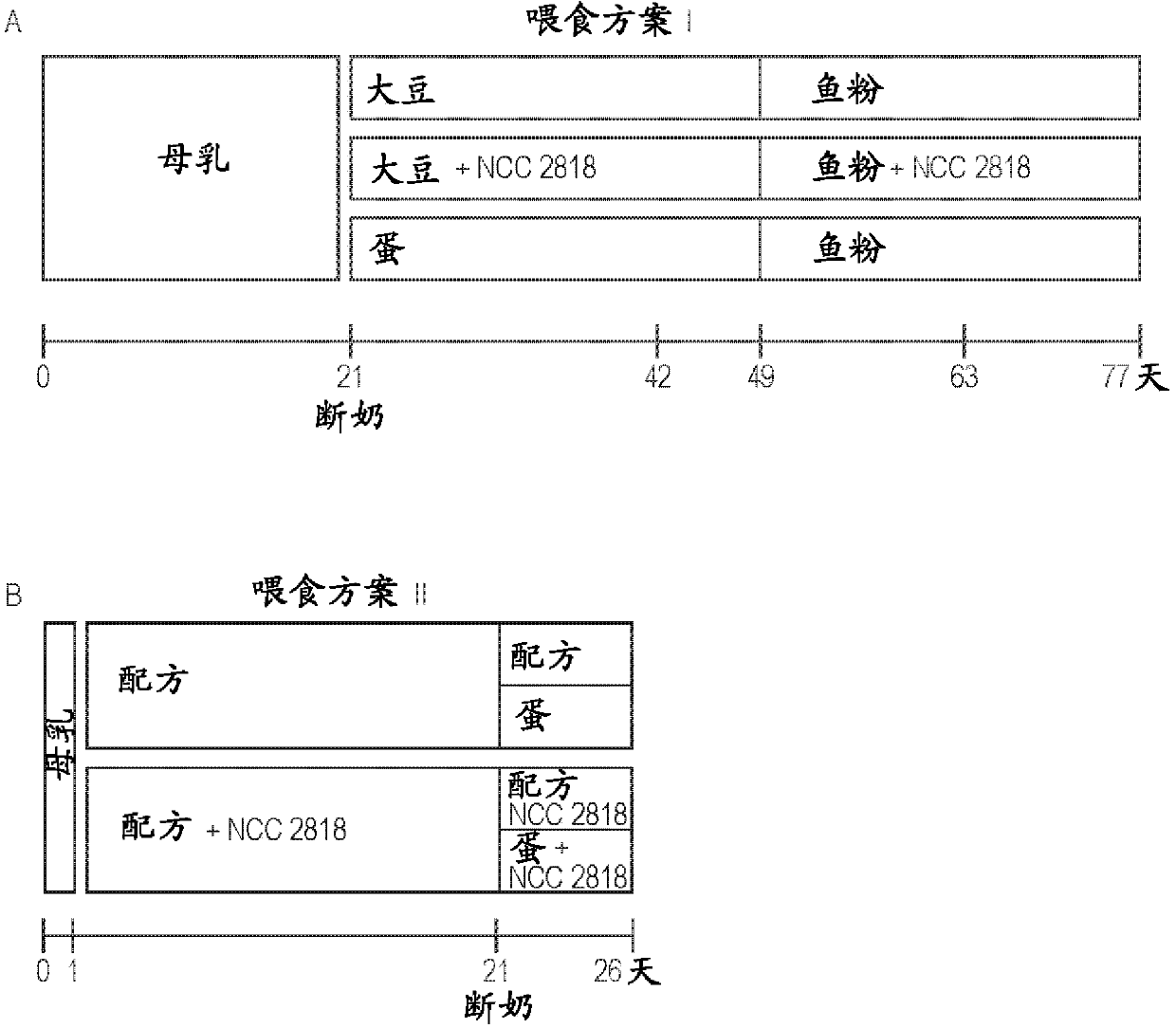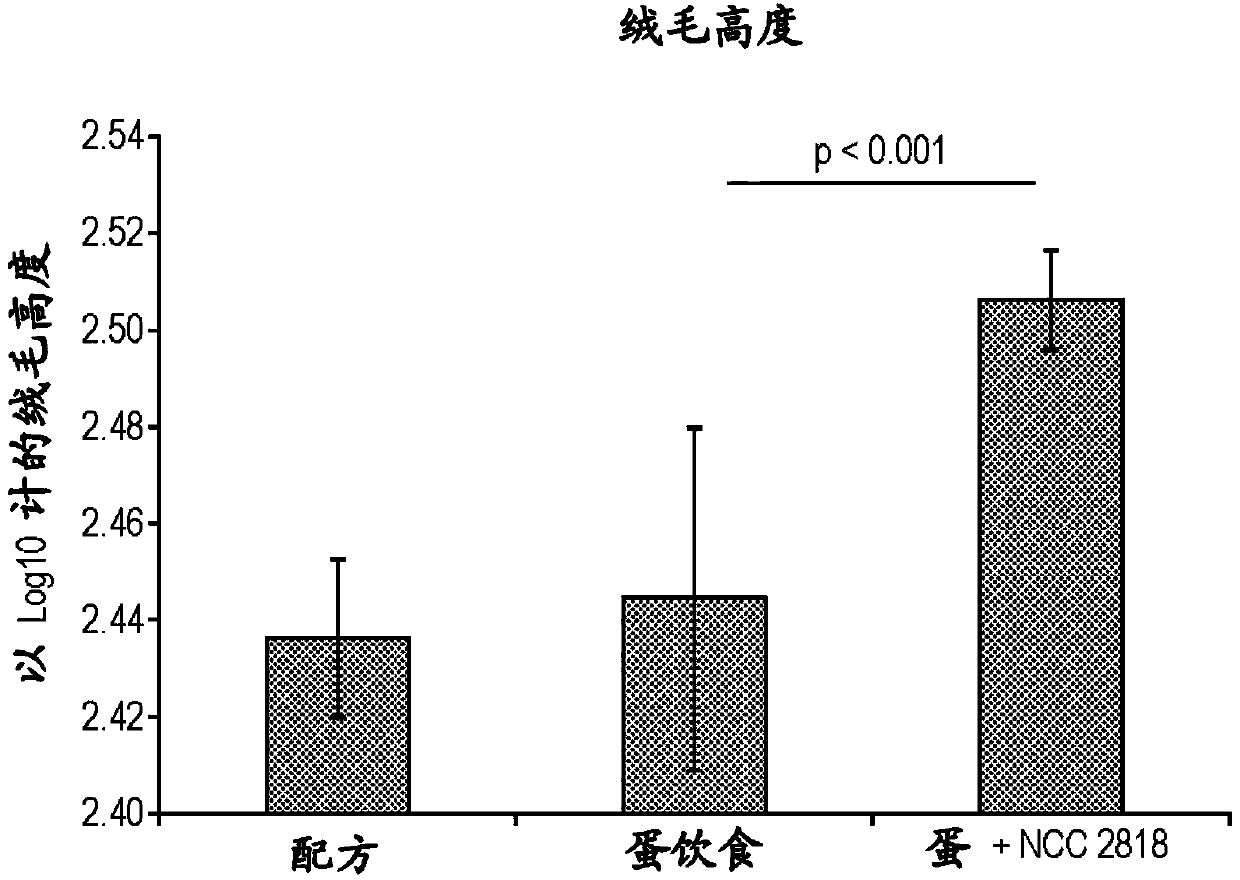Probiotic for administration to healthy young mammals during the weaning period for improving tolerance to newly introduced food stuffs
A technology for mammals and probiotics, applied in the directions of bacteria, food science, and the function of food ingredients used in food preparation, can solve problems such as low consumption, and achieve the effect of preventing severe discomfort and pathological states
- Summary
- Abstract
- Description
- Claims
- Application Information
AI Technical Summary
Problems solved by technology
Method used
Image
Examples
Embodiment 1
[0089] Example 1: Piglet model to study the influence of Bifidobacterium lactis NCC2818 at weaning
[0090] 2 experiments were performed.
[0091] In the first experiment according to the feeding scheme I ( figure 1 A), Piglets were suckled by their mothers during the first three weeks of life. At week 3, the animals were weaned to a solid diet with protein content based on soy supplemented with Bifidobacterium lactis (NCC2818) or non-supplemented soy, or to an unsupplemented ovalbumin (OVA) diet . All animals were switched to a fishmeal diet at week 7, and one group was continuously supplemented with B. lactis NCC2818. Animals were sacrificed at week 11.
[0092] Whole-body soybean-specific IgG levels were measured on days 0, 7, and 14 after weaning ( figure 2 ), IgA, IgM and CD21 levels in mesenteric lymph node (MLN) cells were examined at sacrifice ( Figure 4 ).
[0093] In the second experiment according to feeding scheme II ( figure 1 B), Piglets were fed formul...
Embodiment 3
[0121] growing up milk composition
[0122]
[0123] Additional supporting evidence for the present invention can be found in the paper "Weaning diet induces sustained metabolic phenotype shift in the pig and influences host response to Bifidobacterium lactis NCC2818C" (Merrifield and M. Lewis et al., 2012, Gut doi:10.1136 / gutjnl-2011-301656) , which is hereby incorporated by reference. With particular reference to Merrifield and M. Lewis et al. image 3 , Figure A. The data presented in Merrifield and M. Lewis et al. provide evidence that probiotics, particularly Bifidobacterium animalis subsp. lactis, have an effect on immune adaptation when administered to healthy young mammals during the weaning period.
[0124] PCT
[0125] Printed out form (formerly electronic form)
[0126] (This page is not part of the international application and does not count as a page of the international application)
[0127]
PUM
 Login to View More
Login to View More Abstract
Description
Claims
Application Information
 Login to View More
Login to View More - R&D
- Intellectual Property
- Life Sciences
- Materials
- Tech Scout
- Unparalleled Data Quality
- Higher Quality Content
- 60% Fewer Hallucinations
Browse by: Latest US Patents, China's latest patents, Technical Efficacy Thesaurus, Application Domain, Technology Topic, Popular Technical Reports.
© 2025 PatSnap. All rights reserved.Legal|Privacy policy|Modern Slavery Act Transparency Statement|Sitemap|About US| Contact US: help@patsnap.com



